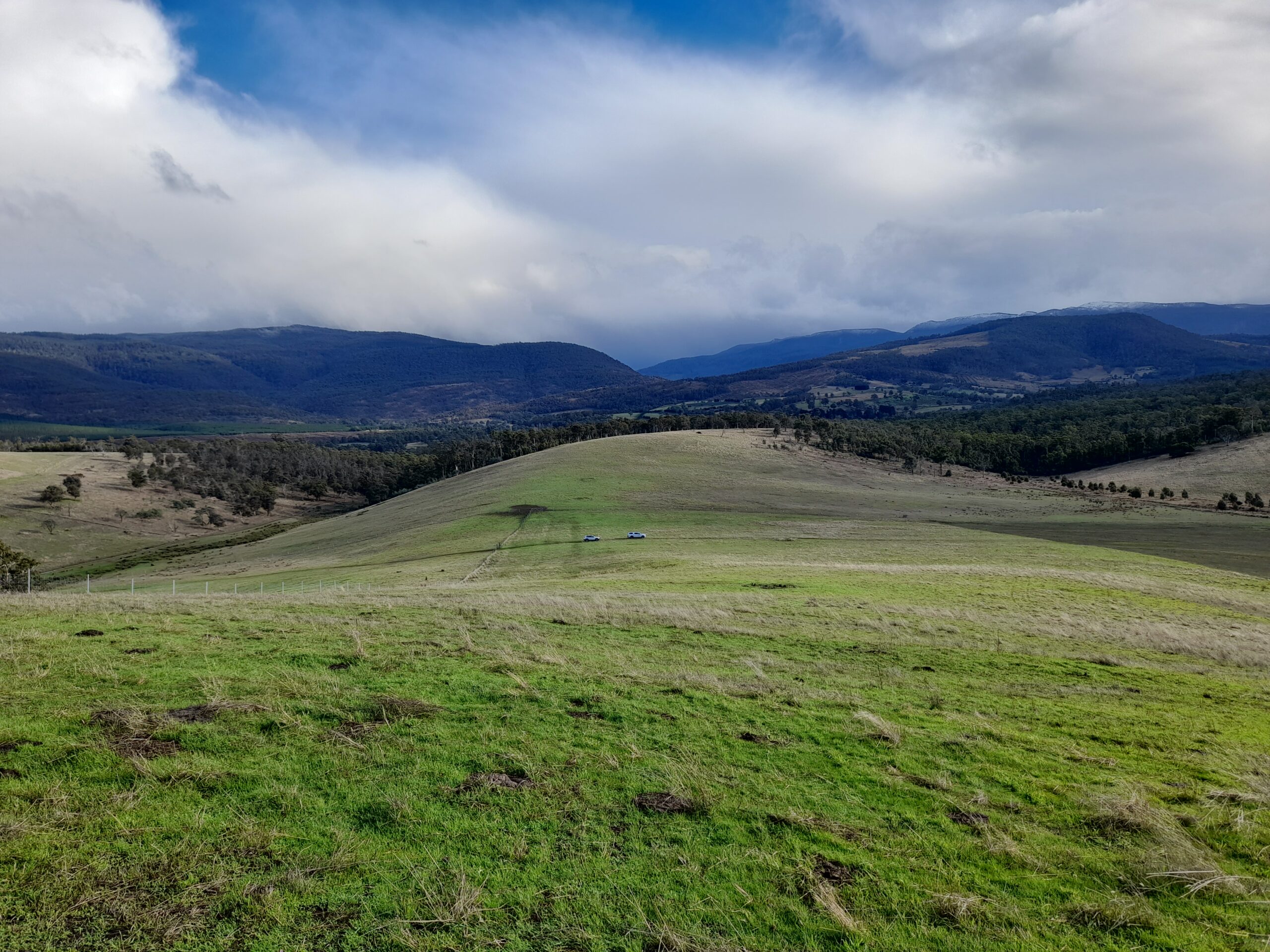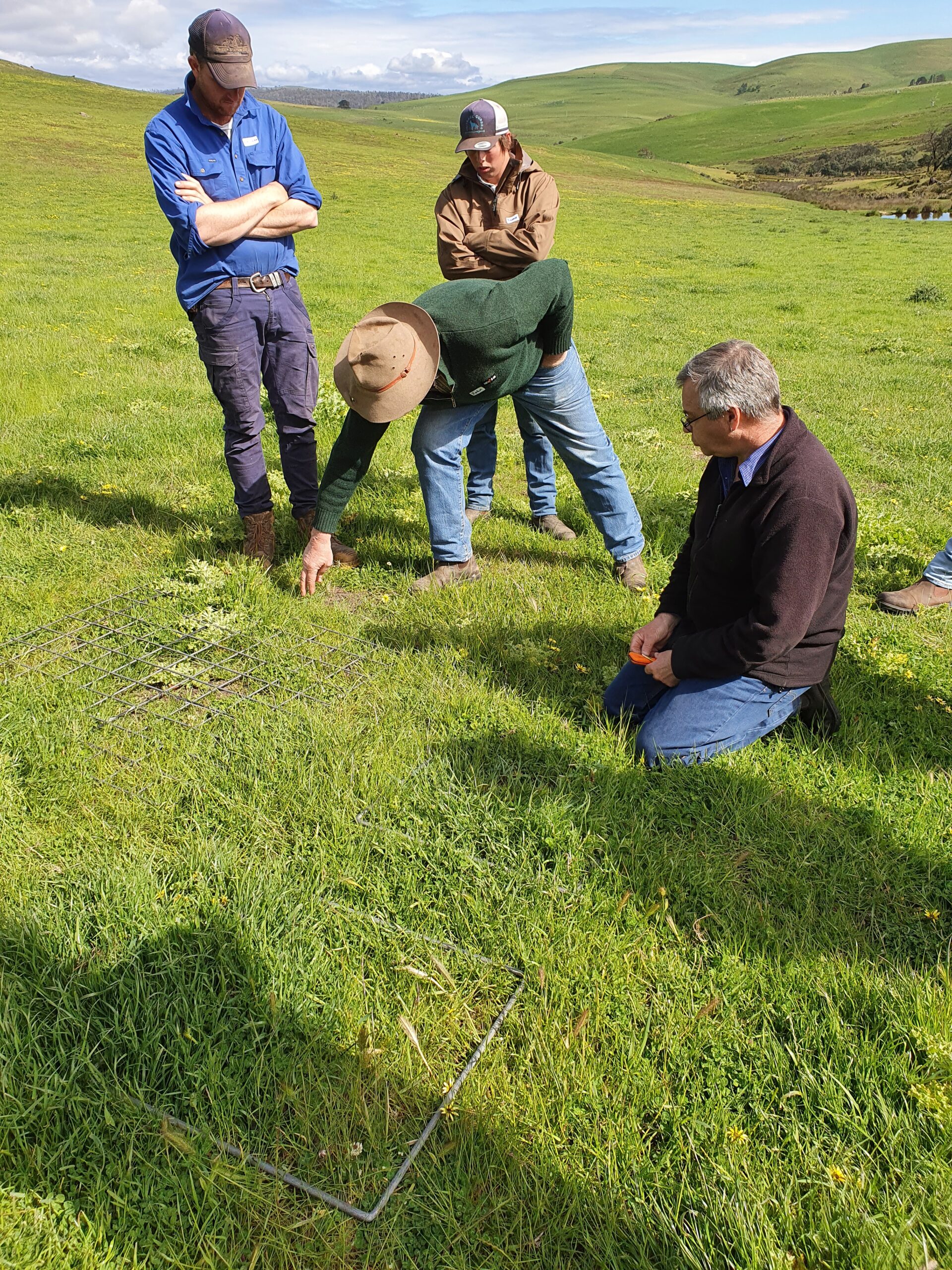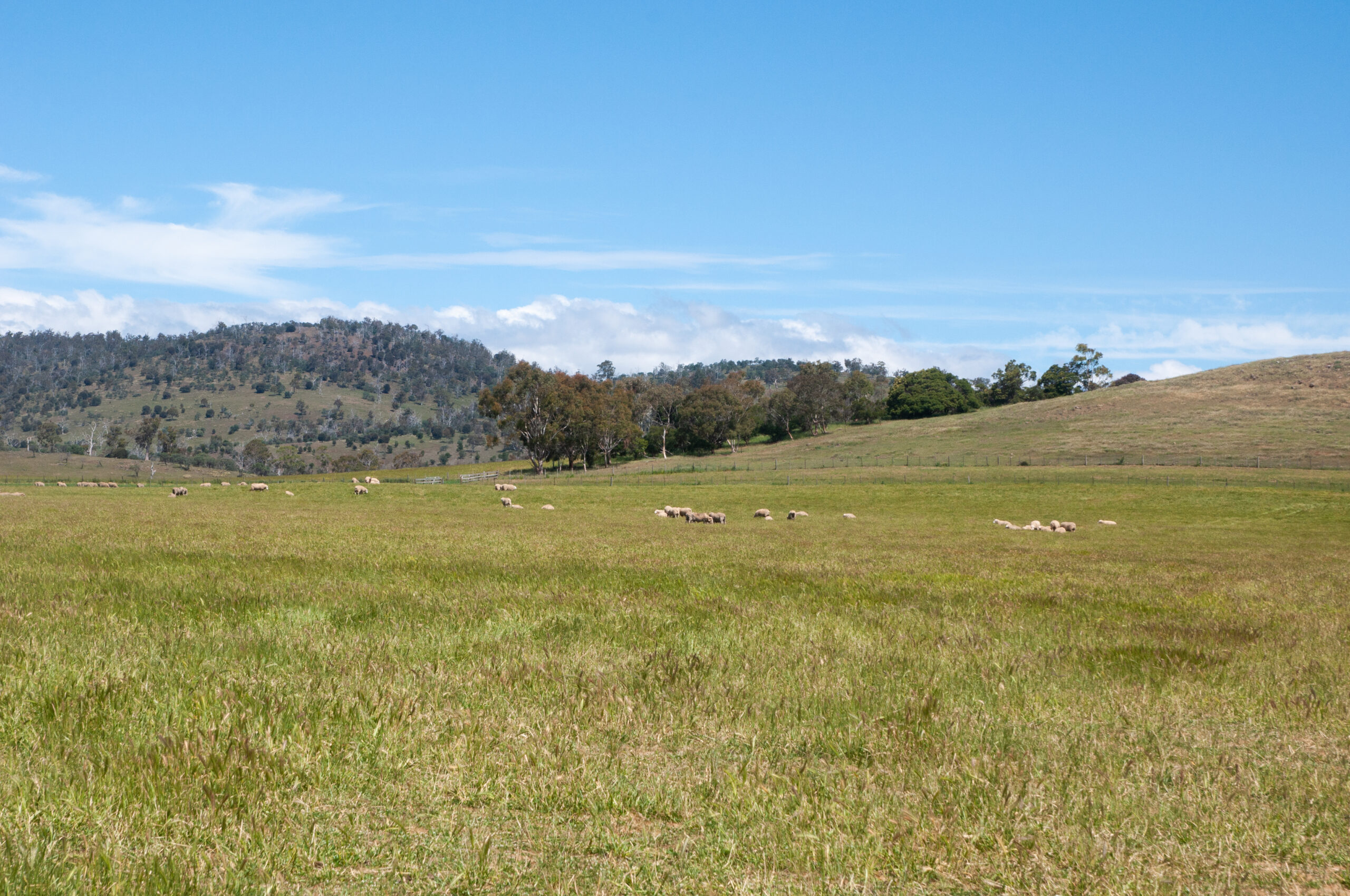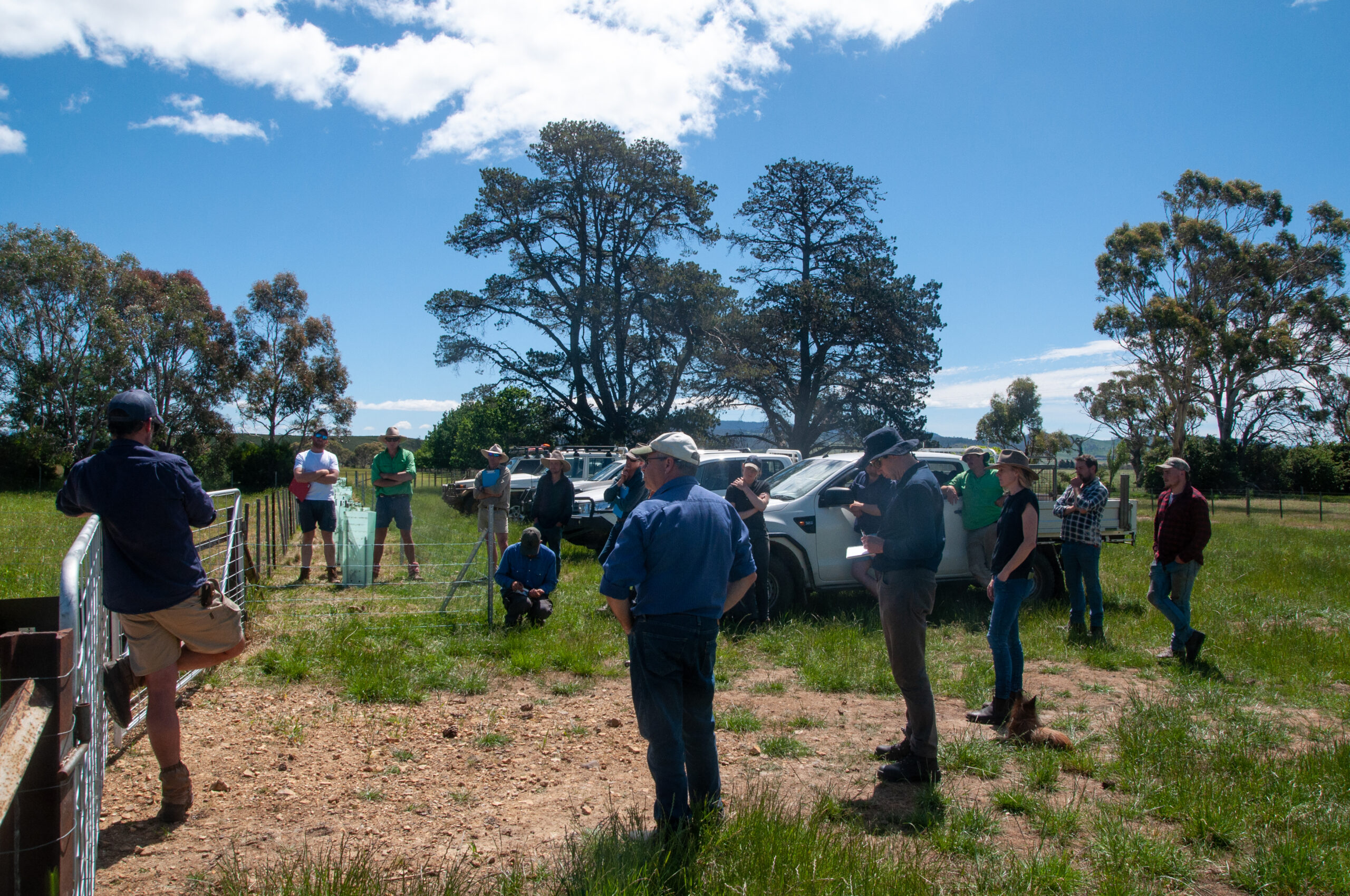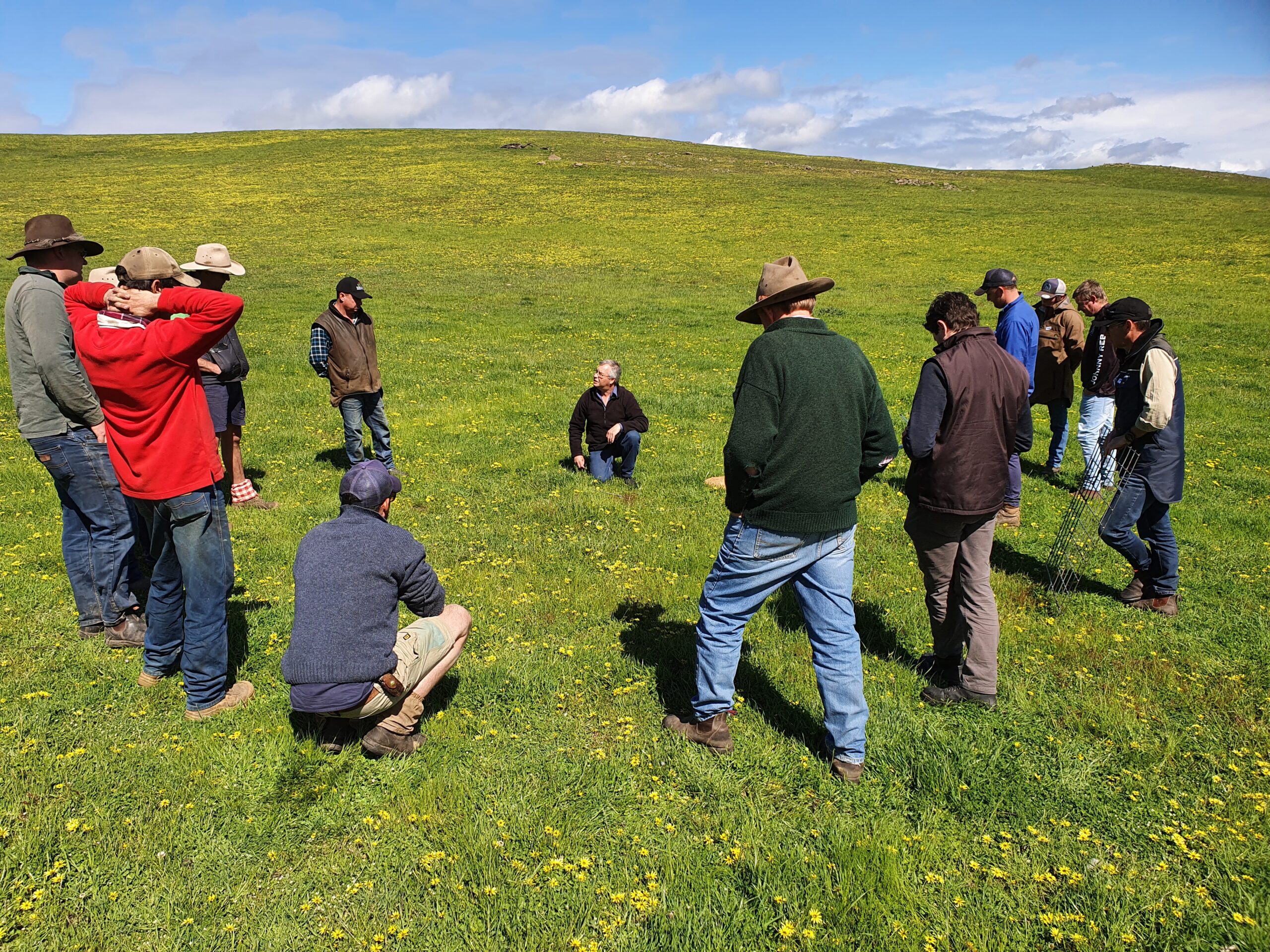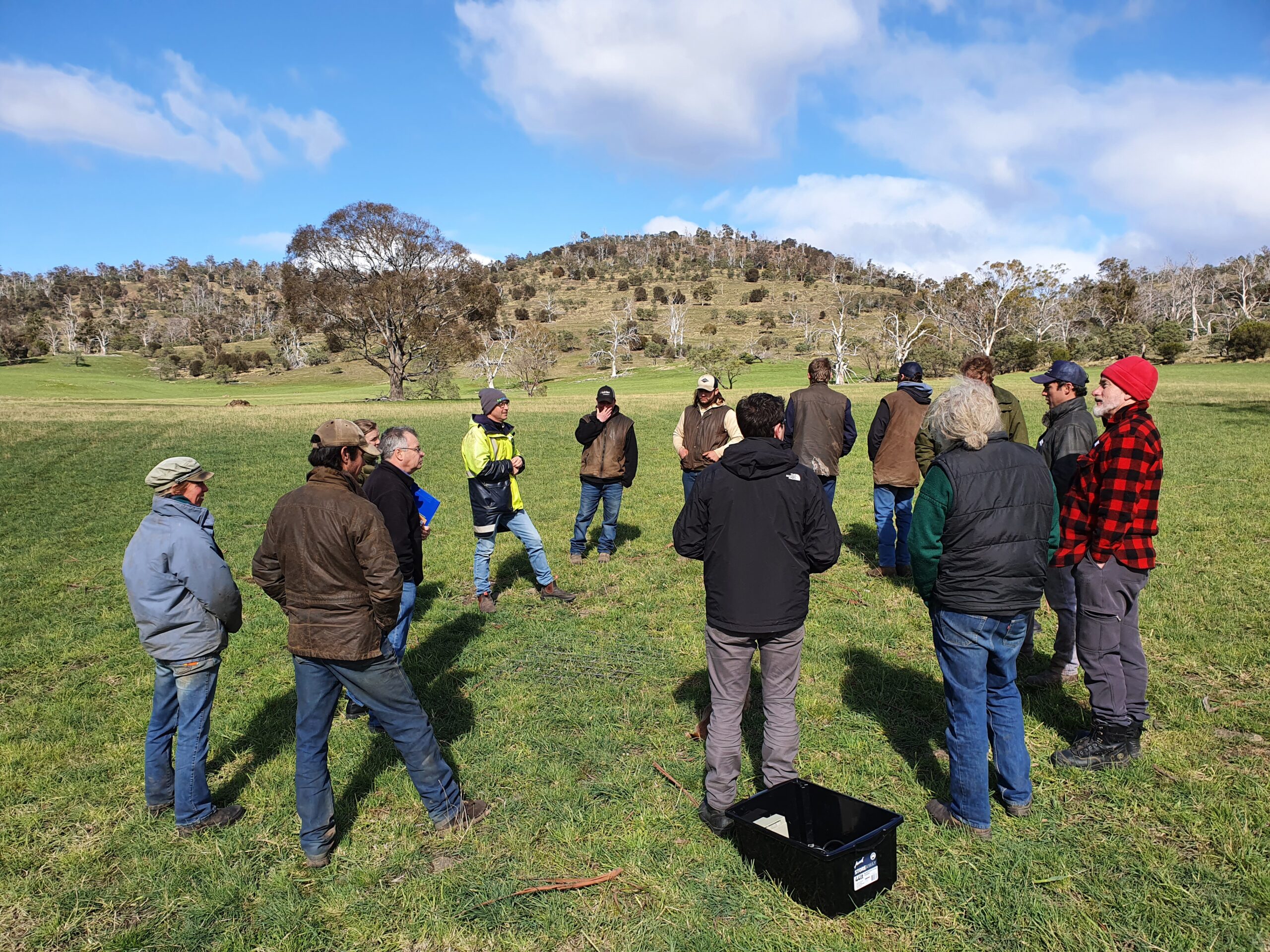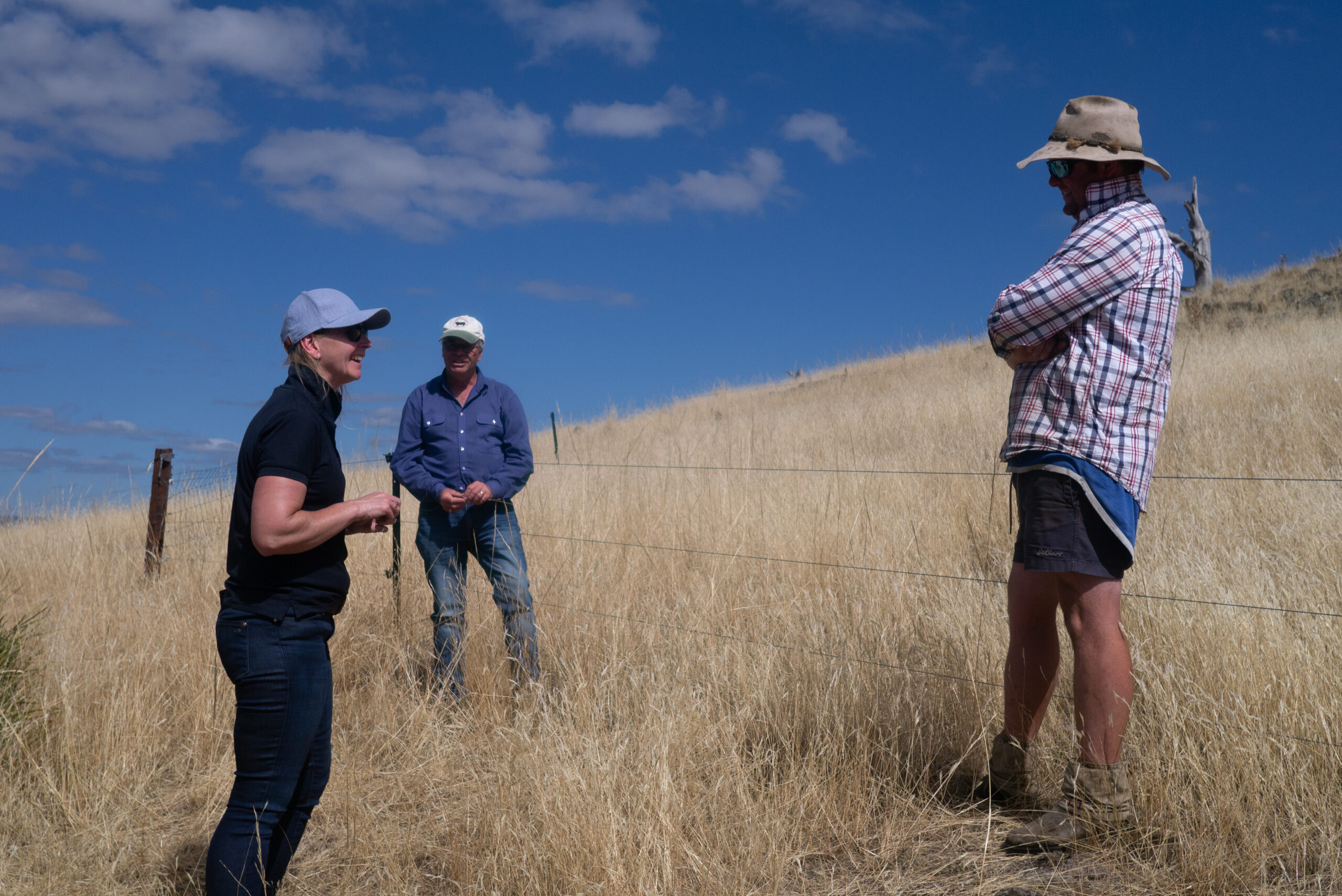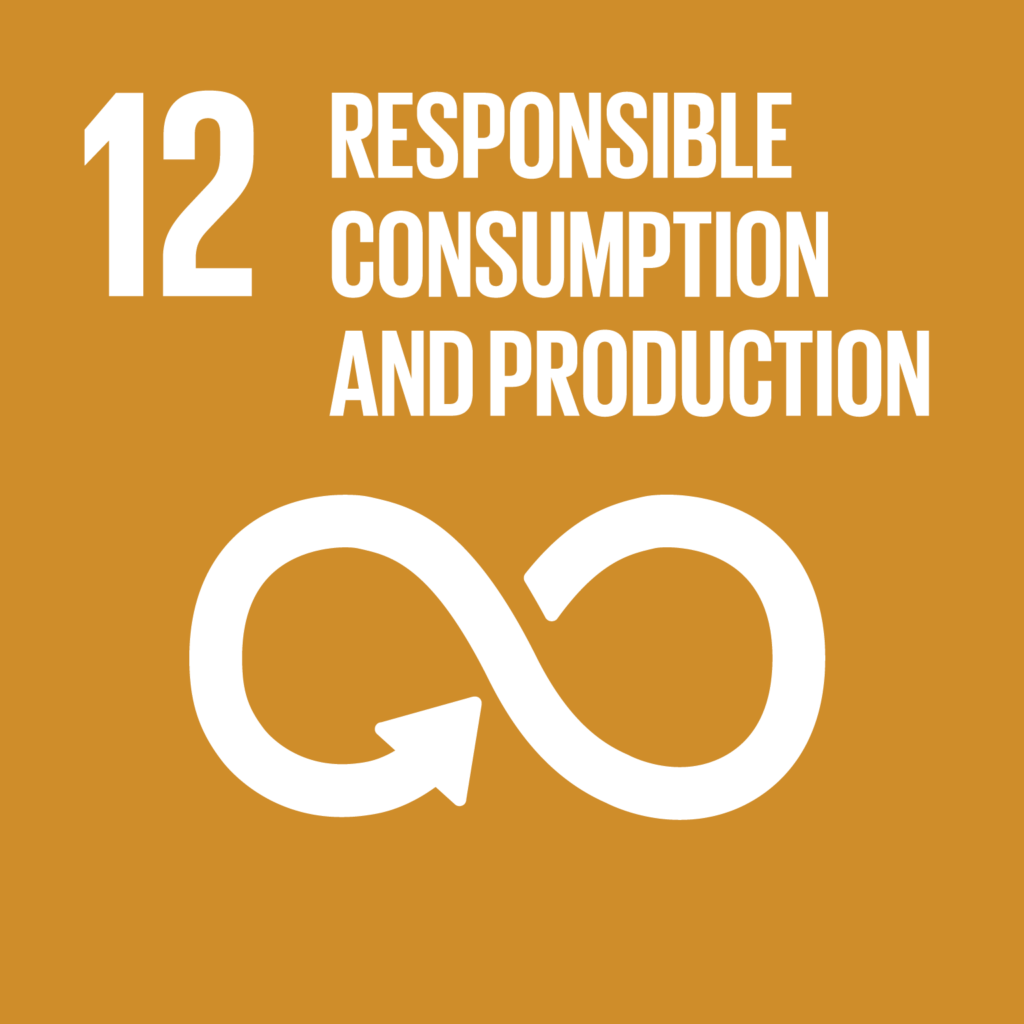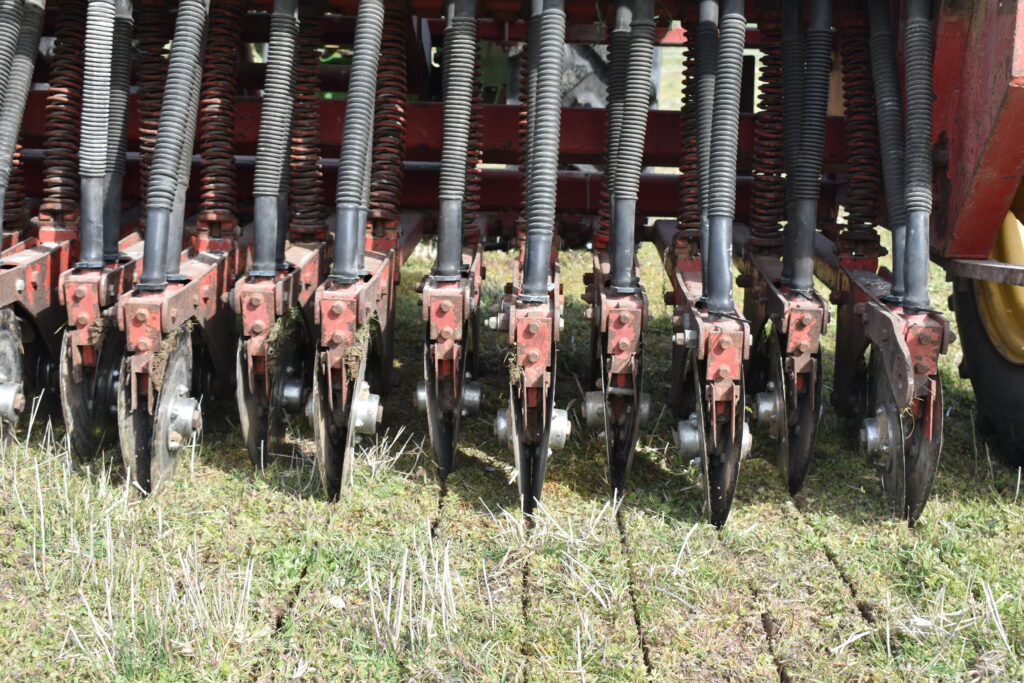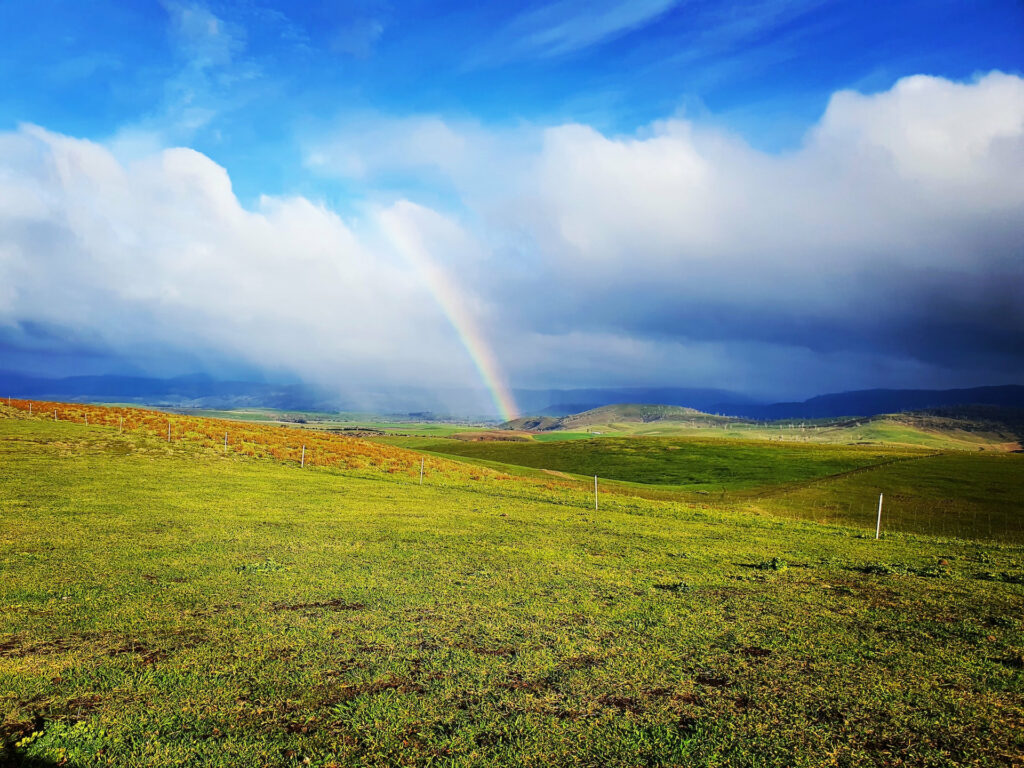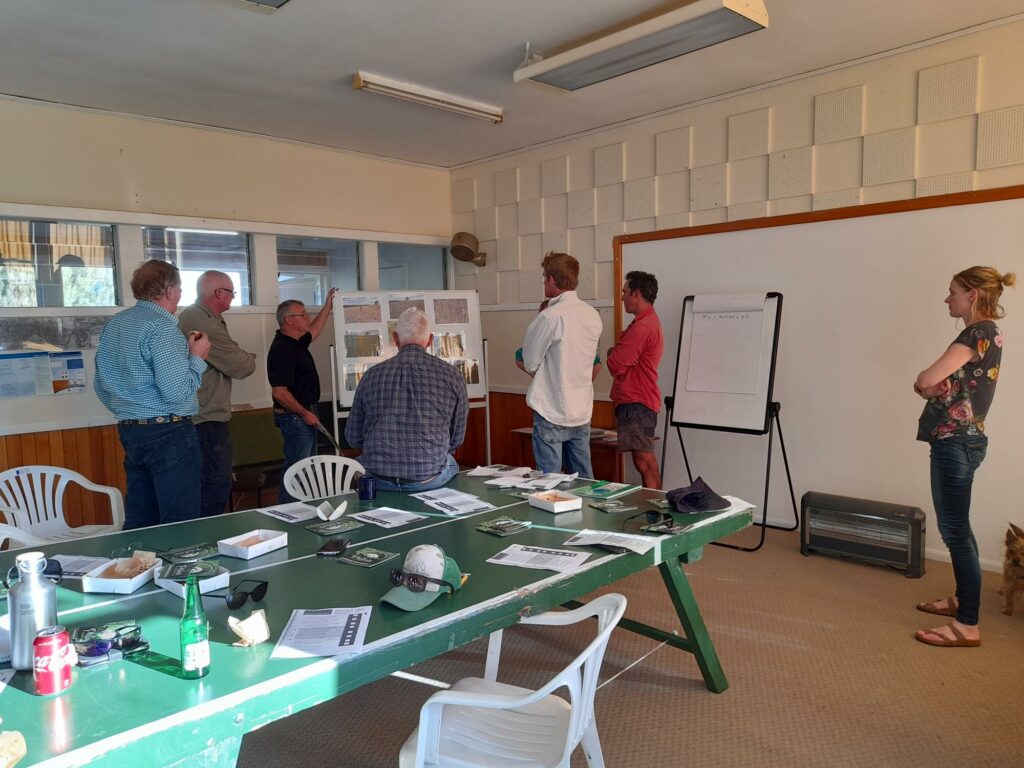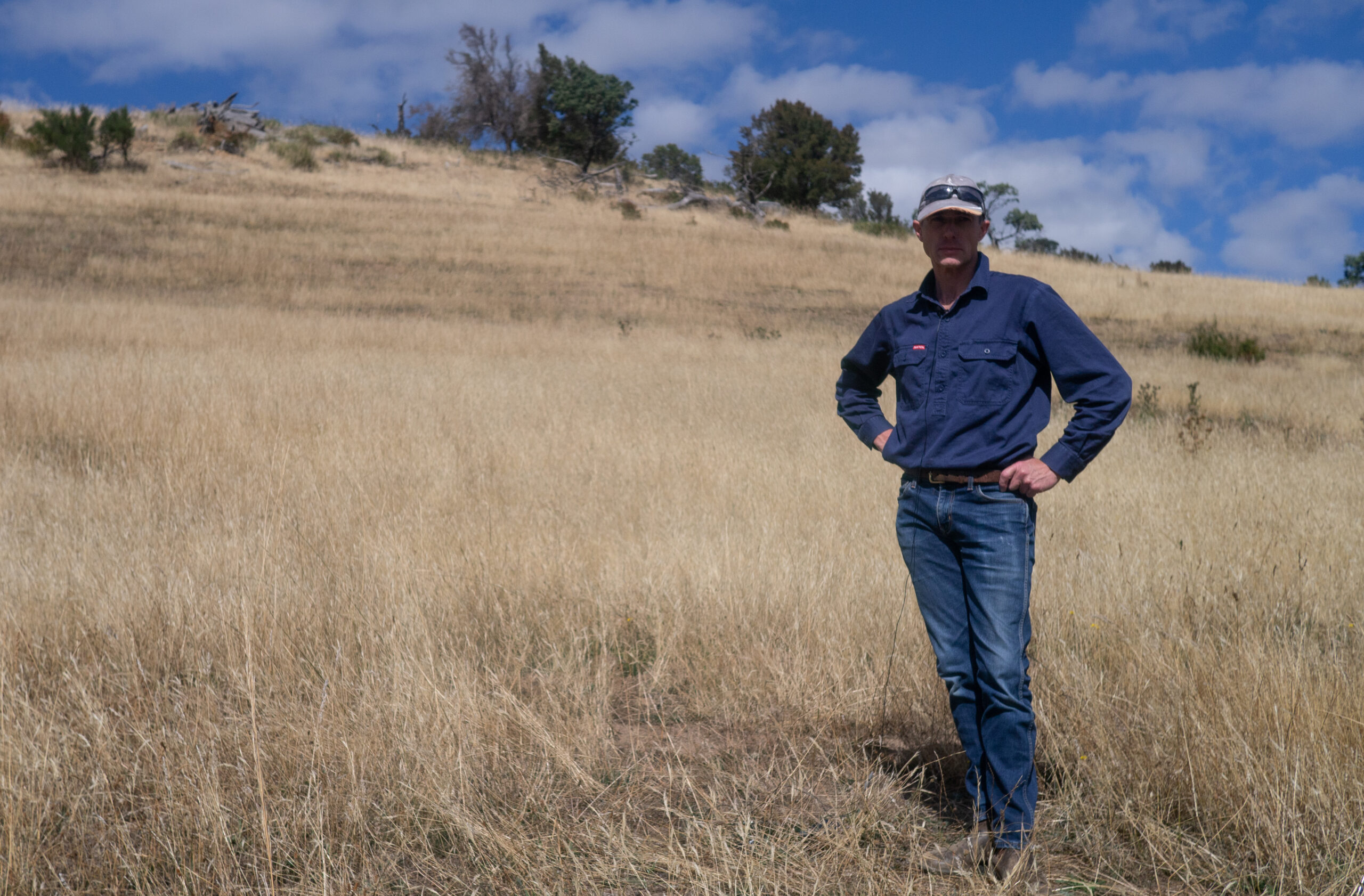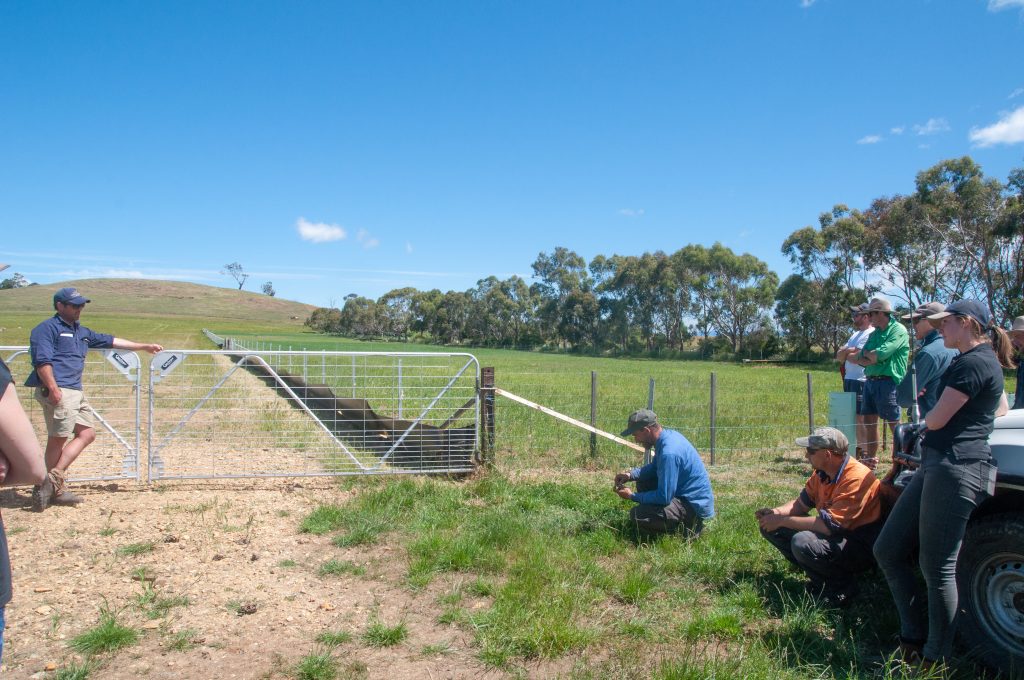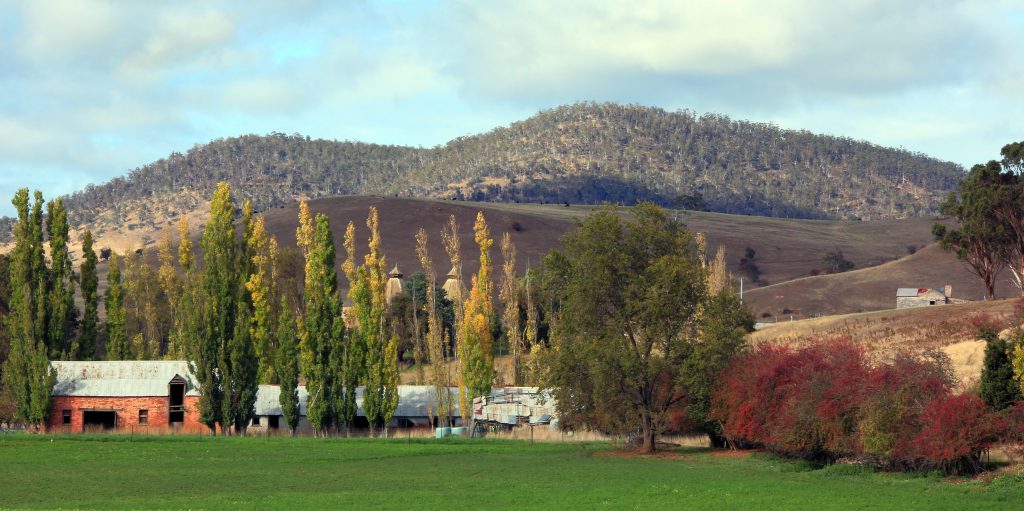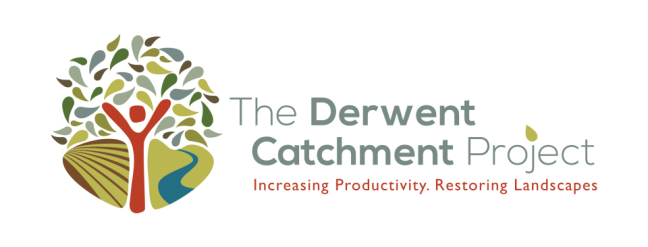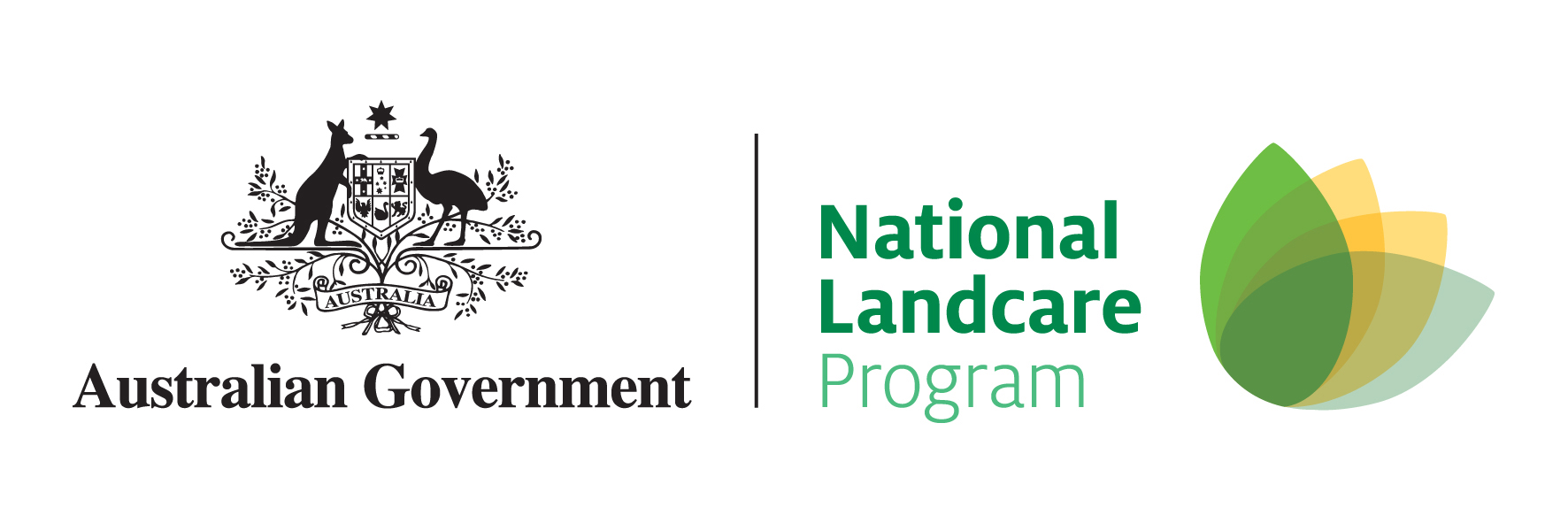Derwent Pasture Information Network
The Derwent catchment is one of Tasmania’s driest regions. The low rainfall conditions create unique production challenges, especially when managing dryland pastures during times of drought. Through the Derwent Pasture Information Network (PIN), NRM South supported farmers’ management of dryland pastures – particularly on north-facing slopes – using a range of approaches to provide locally relevant information.
Exposed north-facing slopes are prone to erosion can cause significant environmental and economic issues. Improving groundcover through thoughtful management actions is a key component to decrease soil loss and with this increase both productivity value for farmers and protect waterways from eroded soils.
Our Approach
Led by the Derwent Catchment Project team, the project;
- Worked with commercial farmers on demonstration sites and case studies;
- Provided one-on-one technical advice;
- Hosted themed field days;
- Coordinated an innovative dryland pasture course;
- Ran peer-learning discussion group and seminars, and;
- Developed the Derwent Pasture Network website – a dedicated information hub for Tasmanian dryland graziers.
PROJECT PILLARS PIN
Background
Short-growing seasons, variable soil conditions and erosion prone north-facing slopes are some of the challenges facing dryland graziers in Tasmania. North-facing slopes in the Derwent Catchment can be difficult to incorporate into grazing systems. Dry and exposed, with rough and steep topography and a harsh microclimate, establishing and maintaining improved pastures on these slopes is challenging.
Where livestock can access large areas of sloping ground, they will preferentially graze the warmer north-facing slopes and increase grazing pressure. Good fencing and water for livestock are needed to manage these areas and restrict stock access. However, the terrain often prevents farmers from being able to set up the necessary infrastructure.
Without careful management, north-facing slopes are also prone to erosion. Without enough vegetation to hold the topsoil together, soil will be blown away on hot windy days and can end up in waterways. Soil loss and declining water quality often means production losses for farmers and can cause significant environmental issues. Once established, the resulting poor land condition is very difficult to address.

Demonstration Sites
The Derwent Pasture Network project worked with six commercial farmers to establish a series of persistent perennial pasture and saltbush forage shrub demonstration sites in the Derwent Catchment. The project tested how well selected persistent perennial pasture species and forage shrubs can cope in the region’s dry north-facing slopes, with the aim of bringing improvements both to the landscape (by improving groundcover and reducing soil erosion) and producers’ bottom line.
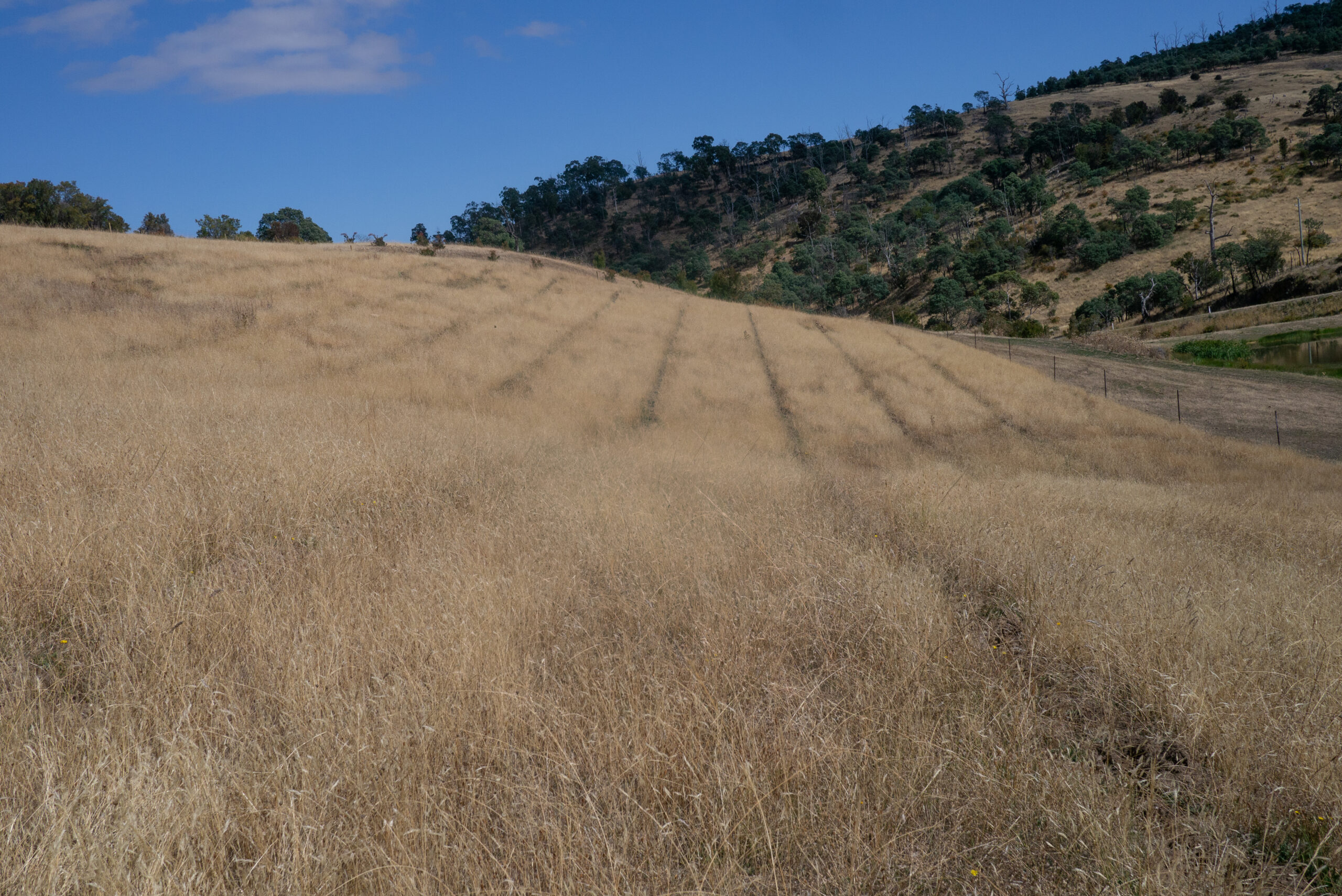
Dryland Pasture Course
The Derwent Pasture Network developed an innovative dryland pasture course (the first of its kind in Tasmania). The course consisted of face-to-face sessions together with site visits to discuss what works well, and what doesn’t. Topics ranged from pasture management, livestock and grazing, and legumes, to management strategies for creating healthy landscapes.
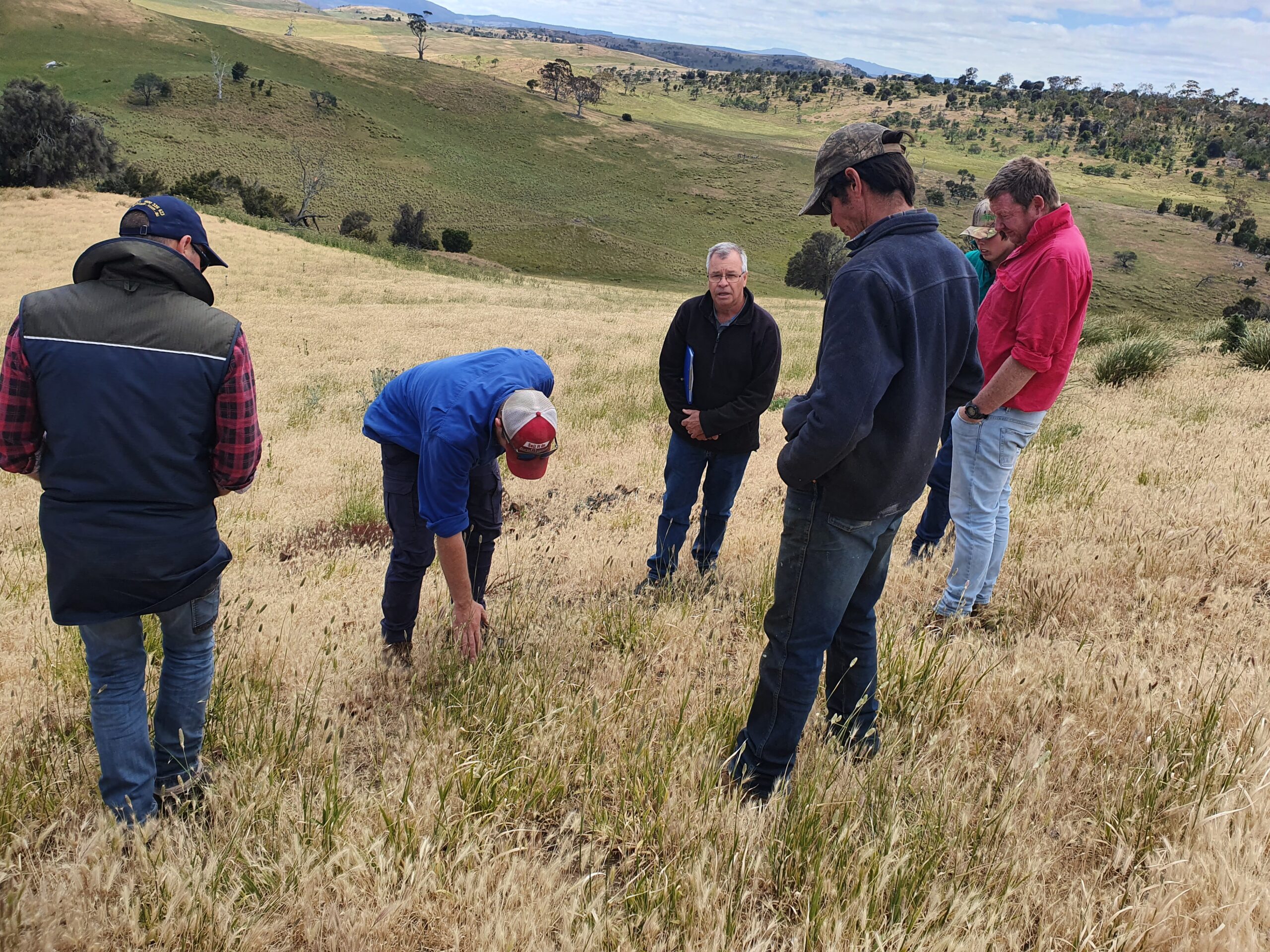
Field Days and Discussion Groups
The project ran field days hosted by various graziers participating in the project. This included visiting some of the project’s demonstration sites and case-studies. In-depth group discussions with the broader grazing community covered pasture management topics aimed at improving and enhancing perennial groundcover, soil health and productivity. Along with discussion group seminars in which experts were invited to present on a specific topic followed by an open discussion with attendees, these events were a highly successful way to enhance knowledge exchange. Topics included soil carbon, the role of legumes in pasture and game management.
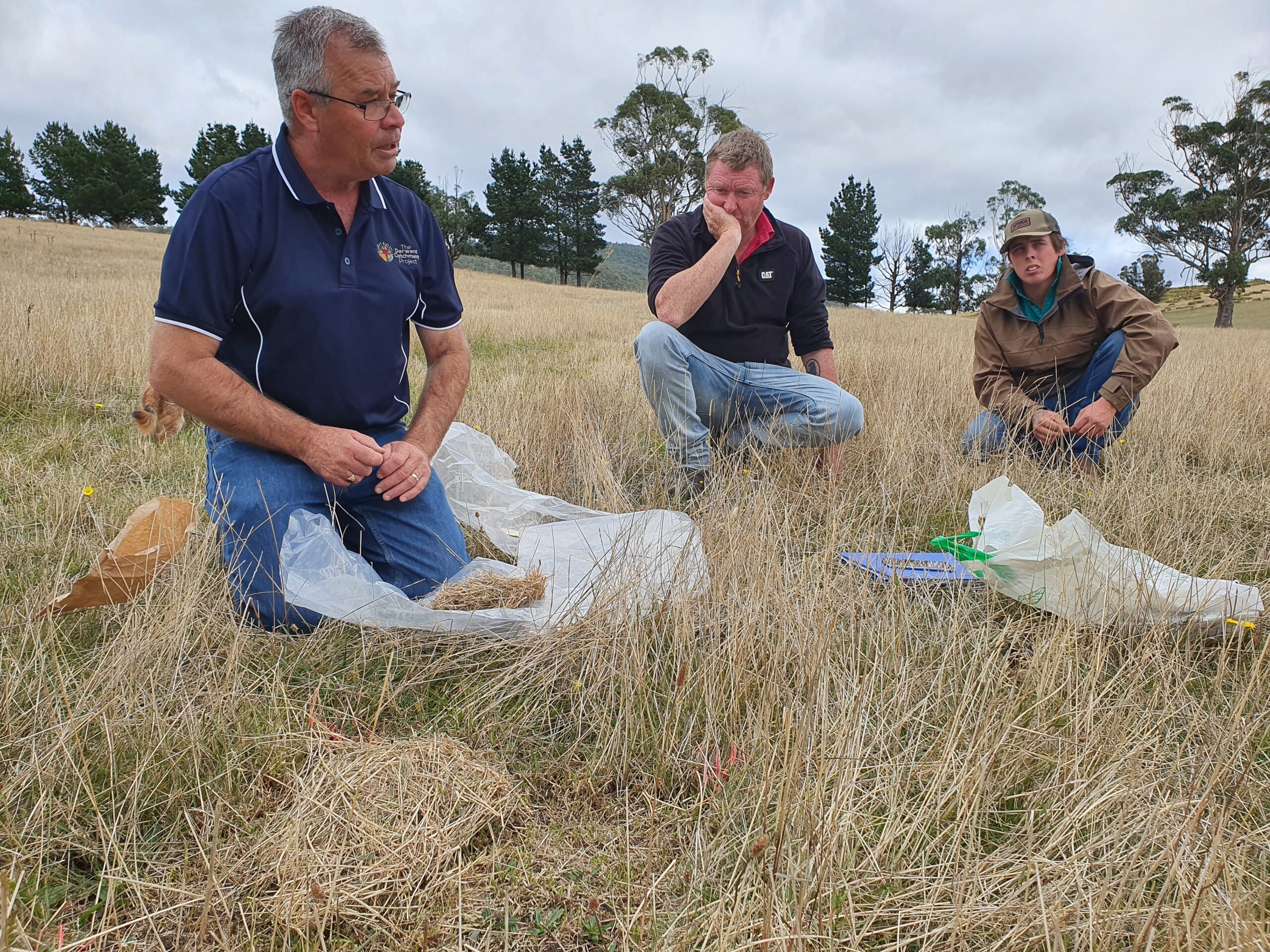
DPN Website
The Pasture Network website is a knowledge sharing hub that has been developed to assist dryland graziers in Tasmania to get the most out of their pastures. It provides locally specific on-ground learnings that provide advice and solutions.
The website provides background on the distinctive challenges of dryland grazing and offers evidence-based information and materials to increase resilience and help safeguard dryland farming properties into the future. The goal of the website is to collate resources and information from our local experts and provide access to the wealth of knowledge held by the farming community in an easy to access format.
Information on how to build resilience and improve the condition and productivity of farms is all freely available, alongside monitoring and management-related factsheets, guides, podcasts and videos covering a range of topics.
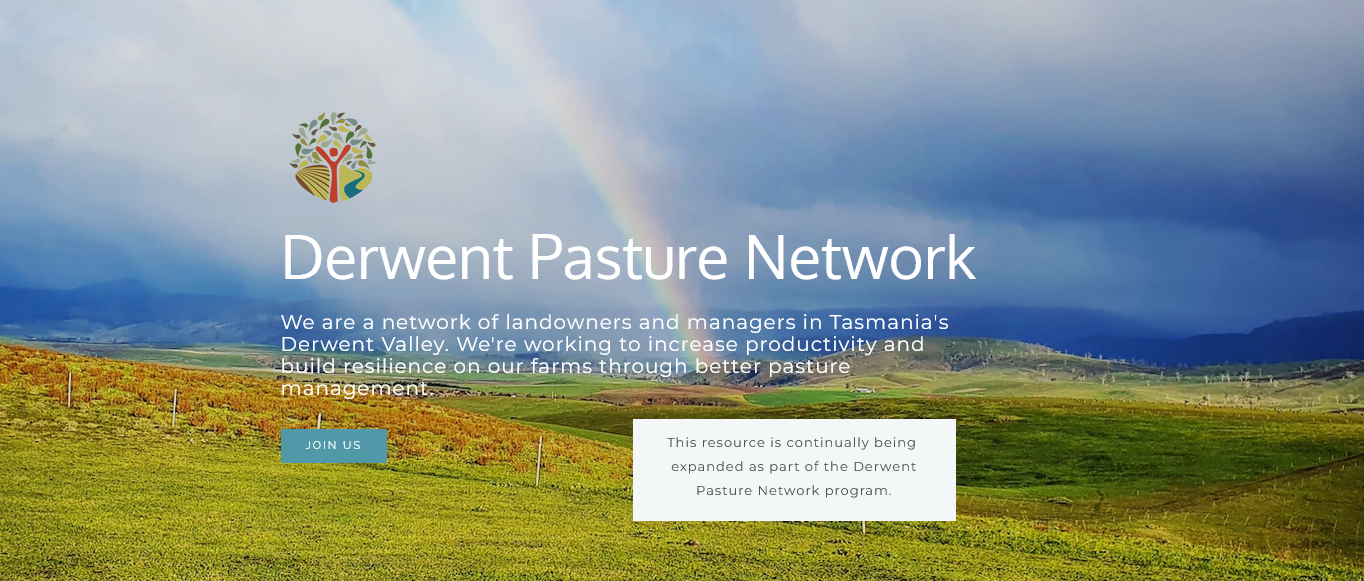
Project Achievements
6 demonstration sites established
5 field days
9 discussion group seminars
184 one-on-one technical advice sessions delivered
17 nutrition plans developed
28 Grazing Time course participants
What's Next
Beyond the scope of the Derwent catchment region, learnings from this project will be applicable to dryland graziers in other parts of Tasmania. Over the coming years, NRM South’s Regional Agricultural Landcare Facilitator will play a key role in sharing relevant information and learnings from the project to the wider farming community.
